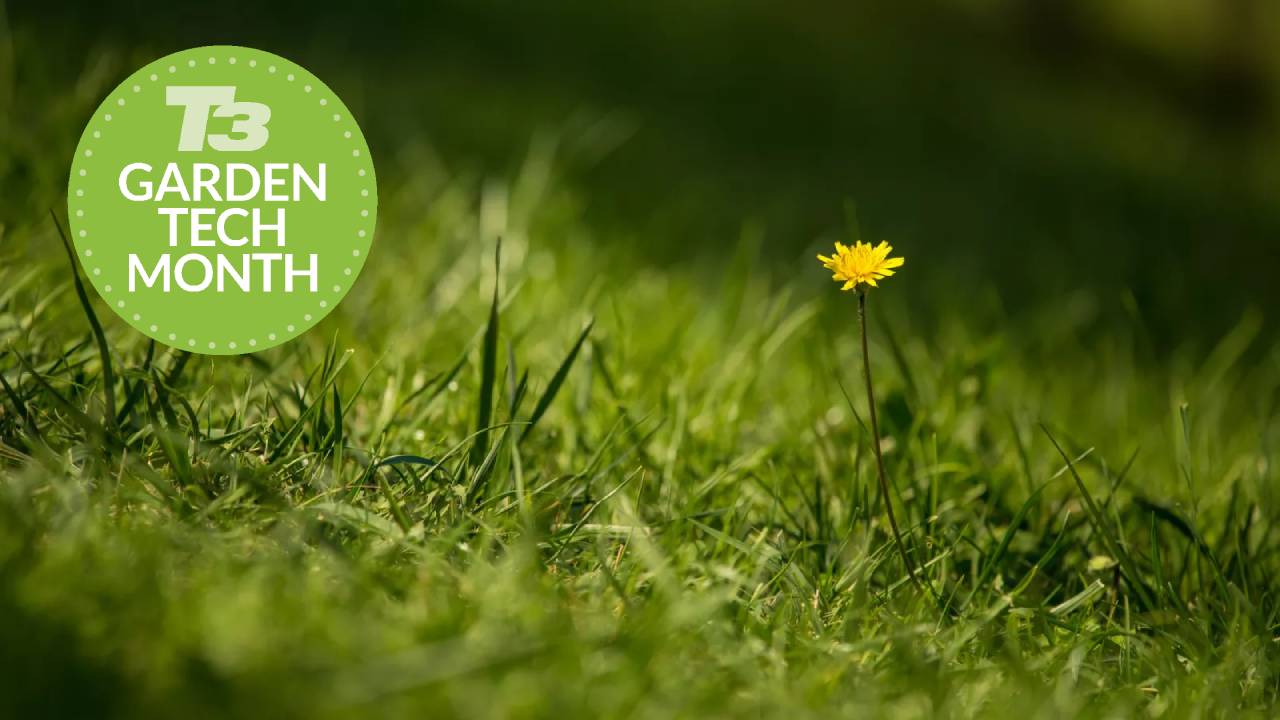

If you’ve ever been on a boat along the Thames, you’ll have likely noticed some of the swishier homes with stunning green swards that stretch majestically all the way to the river’s edge, and wished you had a lawn like that. Well, chances are the owners are either manically obsessive about their lawns or, more likely, they pay good money for a professional gardener to ensure that their lawns always look like a brochure ad for a grass seed company. They almost certainly don’t have any dogs either.
Well, while you may never get your turf to look that splendid, you can at least make a great start to improving the look of it by following these handy tips from one of our gardening experts Del Adams. Take it away!
1. Mowing
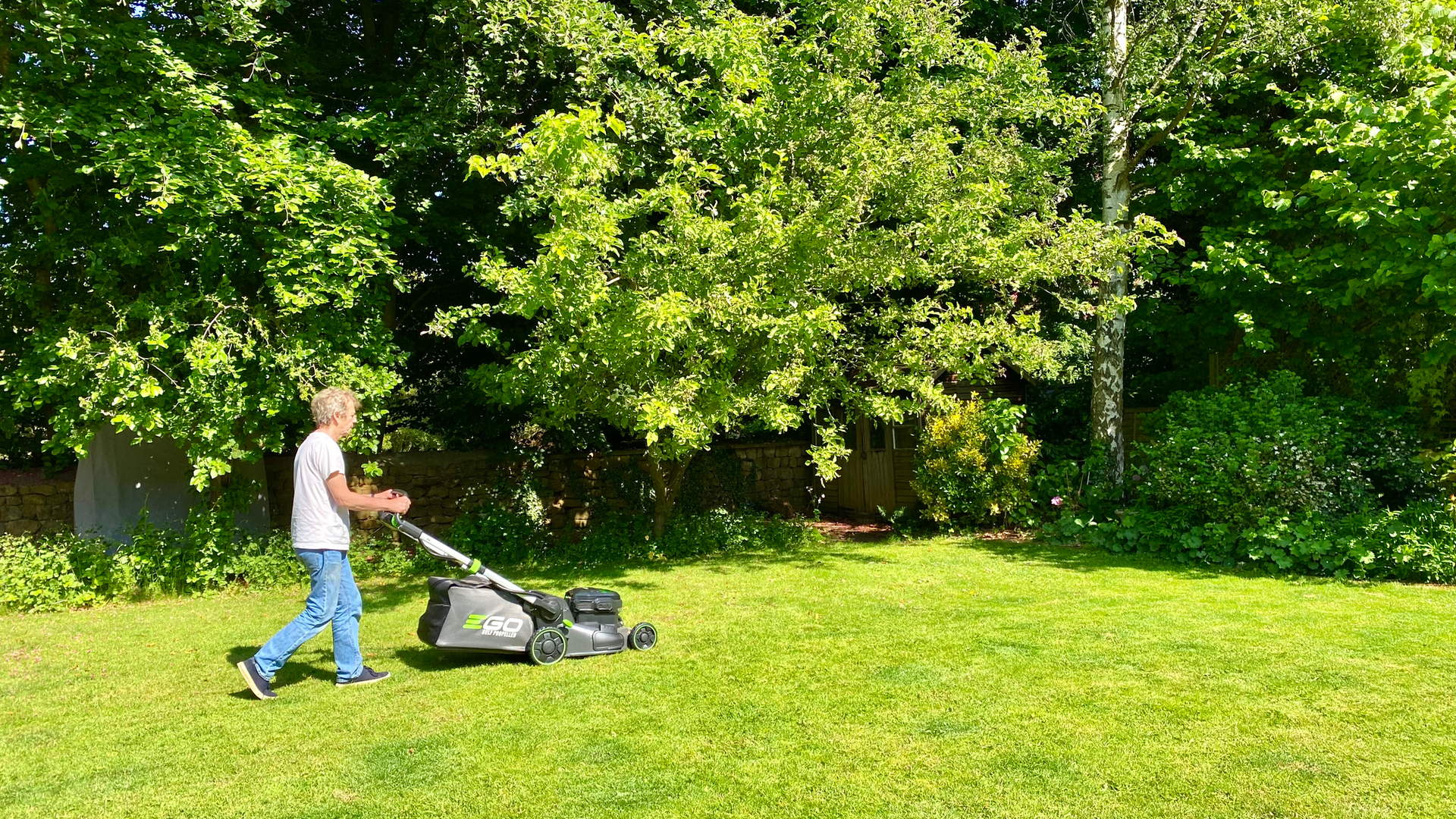
The very best way to keep a lawn in tip top condition is to mow it on a regular basis – at least once a week. That way weeds will have a harder time to establish and the regular cutting will promote growth, stronger grass roots and healthier blades.
However, there is a valid ecological argument against mowing in early spring since that is the time that wildflowers starts to bloom, providing an early source of nutrition and pollen for bees and other insects. Hence the annual ‘No Mow May’ campaign by charity Plantlife, which aims to "make lasting positive change for wildflowers, plants and fungi."
Although ‘No Mow May’ has now passed, many gardeners are continuing with this new tradition of not mowing all or parts of their lawns for most of the spring period. Aside from providing food and habitats for a myriad of insects, allowing grass to grow in very early spring helps give it a better start.
Of course, the downside to all this is that the longer you leave a lawn untouched, the longer it will grow and that can be a nightmare when it comes to mowing. Your first cut should be on the highest blade setting and with the grass collector in place. If the grass is especially long, you may even have to tilt the mower back a little as you push so the blade doesn’t bog down. You will also need to make many trips to the compost heap or your green/brown waste bin, which will quickly fill up with grass cuttings.
Your second cut – about a day later – should be with the blade set to one or two steps above minimum height and still with the grass collector in place. The last thing you want to do is cut the grass too short or, worse, scalp it as this really will damage its chances of survival, especially if there is an early heatwave.
Sign up to the T3 newsletter for smarter living straight to your inbox
Get all the latest news, reviews, deals and buying guides on gorgeous tech, home and active products from the T3 experts
Now you’ve got the lawn down to a healthy height that looks soft and inviting, your subsequent cuts can be performed at regular intervals – ideally at least once a week. You’re looking for about an inch in height if its a ryegrass – the most popular type of grass in the UK – or much lower if its a bowling green mix of fescues and bentgrasses.
If your lawn mower came with a mulching kit, this is a good time to use it since mulching is excellent for the lawn. This is because the nitrogen-rich cuttings are forced back into the sod, fertilising it in the process. Avoid mulching long grass because the cuttings will clump together, depriving the lawn of sunlight. They will also be ugly to look at.
Unless your lawn is larger than average, I would always recommend using a cordless lawnmower since it will perform the task with zero faff. You can find some excellent models in our guide to the best cordless lawn mowers. Alternatively, if your lawn is on the large side, perhaps consider a petrol-powered mower instead.
2. Watering
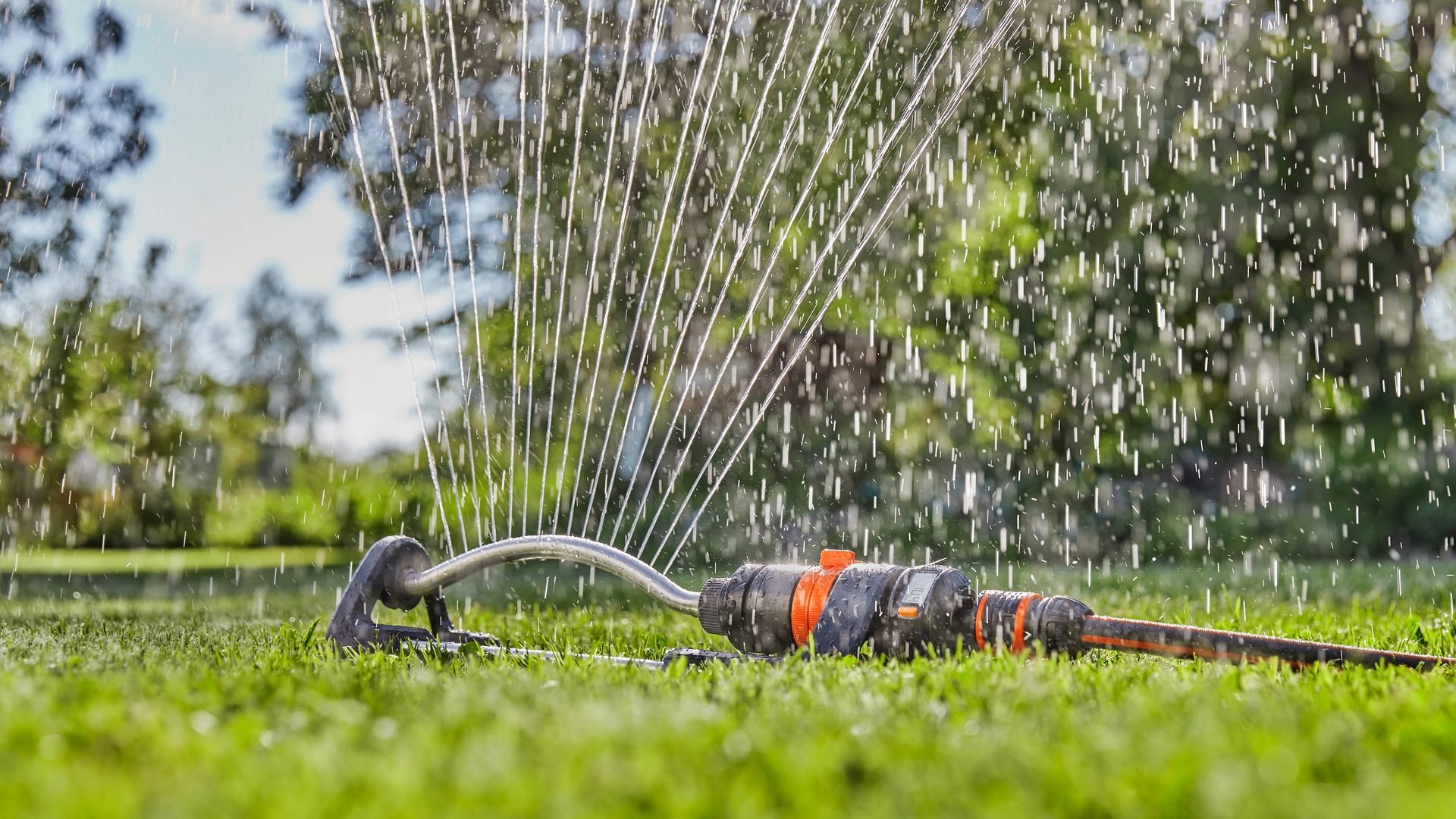
Along with regular mowing, watering in late spring and summer is essential for maintaining a lush and healthy sward. The best time to water the lawn is early in the morning or late afternoon when there’s no sun on the garden, as this will ensure the water has enough time to penetrate the soil. Avoid watering during the hottest part of the day, as most of the moisture will be lost to evaporation. Also be sure to give the lawn a good dose so it penetrates the all-important root zone.
I would suggest using a garden sprinkler as this is far and away the most efficient and practical way to water any lawn, no matter the size. There are a number of different types sprinkler on the market and we cover many of them in our guide to the best garden sprinklers.
I recommend about 10 minutes of intensive watering for each section of lawn. After all, you want to recreate the same effect as a decent downpour of rain. I would also highly recommend buying a decent tap timer which will cut off the water supply after a predetermined length of time. Without one, you risk forgetting to turn off the sprinkler and if you’re watering the lawn in the evening, chances are you might go to bed and wake up in the morning with a sodden lawn and a very expensive water bill.
Finally, don’t panic if a hose pipe ban occurs during the summer and your lawn starts to resemble a desert scape. Grass goes into hibernation when a drought occurs and most of the time it is able to magically revive.
3. Scarifying
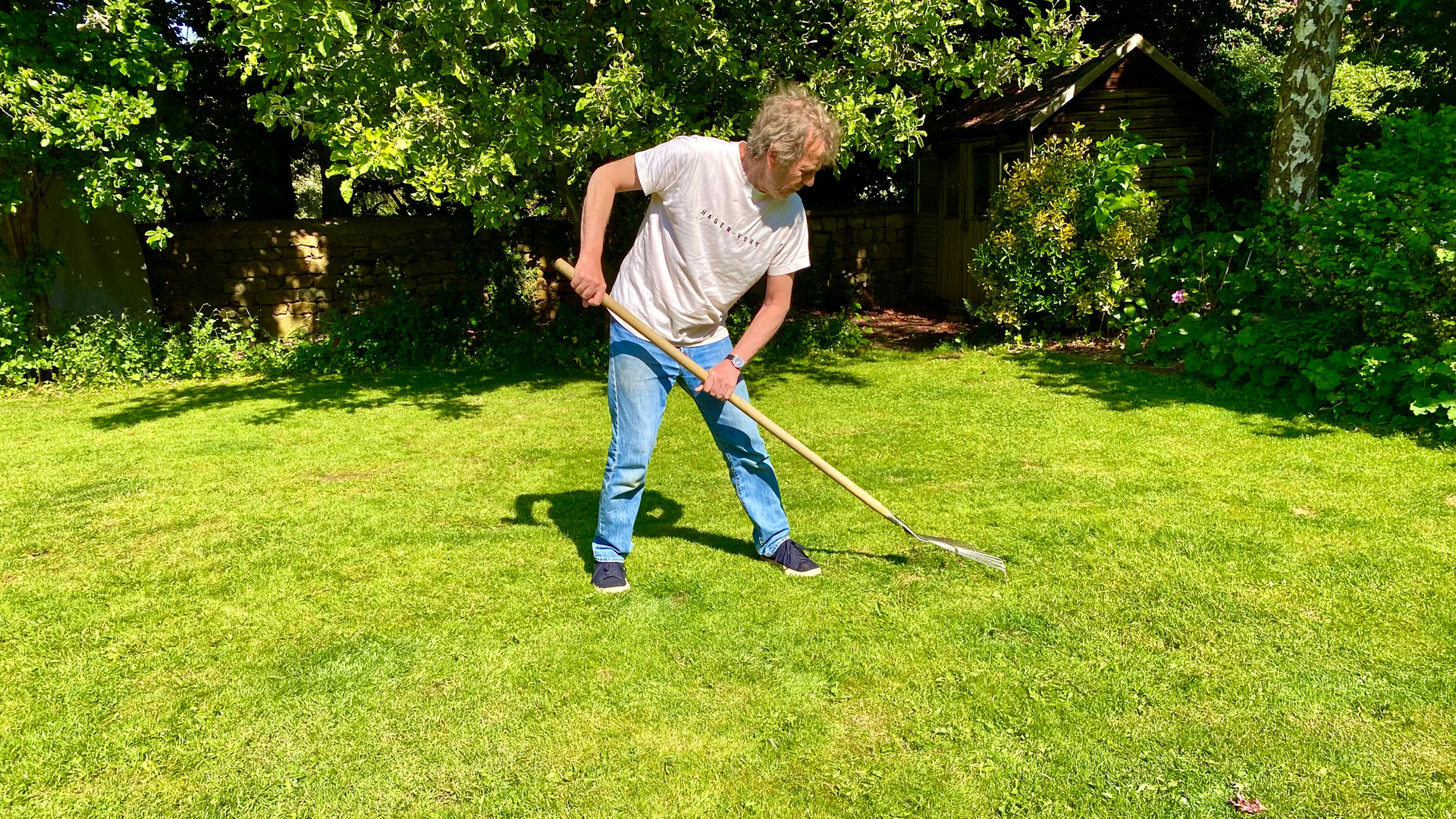
Not all lawns require scarifying but it’s a good thing to consider if you want your lawn to look its very best. Scarifying is done to remove thatch, which comprises a layer of dead grass and moss that builds up between the soil and the grass blades. Since excessive thatch can prevent water, air and nutrients from reaching the roots, leading to a weak and unhealthy lawn, it helps to alleviate this problem by raking out the thatch to promote healthier growth. The best time to scarify a lawn is during spring when grass is actively growing.
Before scarifying, mow your lawn at a lower setting than usual and ensure it is watered a day or two earlier as this will allow for better access to the thatch layer and make it easier to remove. Now it’s time to select the appropriate scarifying equipment which could be a simple wire lawn rake (you’ll find a suitable model in our handy guide to the best manual garden tools) or, if you’re really brave, a motorised scarifying machine.
If you have a small lawn, use a wire rake and put some elbow grease into it by pulling it back in long strokes until you see a gathering of moss develop. Alternatively, if you have a larger sward, you’ll be much better served by hiring a motorised scarifier or buying a cheap electric model like the Spear & Jackson S1432ESC.
At this juncture, I should forewarn you that using a motorised scarifier involves a delicate balance between having the revolving blades too high so they don’t make much impact or, worse, too low which will cut too deeply into the turf, ripping out clumps of grass and damaging the roots. Hence, it’s always best to adjust the depth of the blades at the highest setting and gradually lower them a step at a time until you can see evidence of thatch and not too many grass cuttings.
By its very nature, scarifying will make your lawn look very thin and patchy and you may even think that you’ve destroyed it. Don’t panic – this is normal and the grass will eventually recover and look healthier and more vibrant than ever.
4. Fertilising
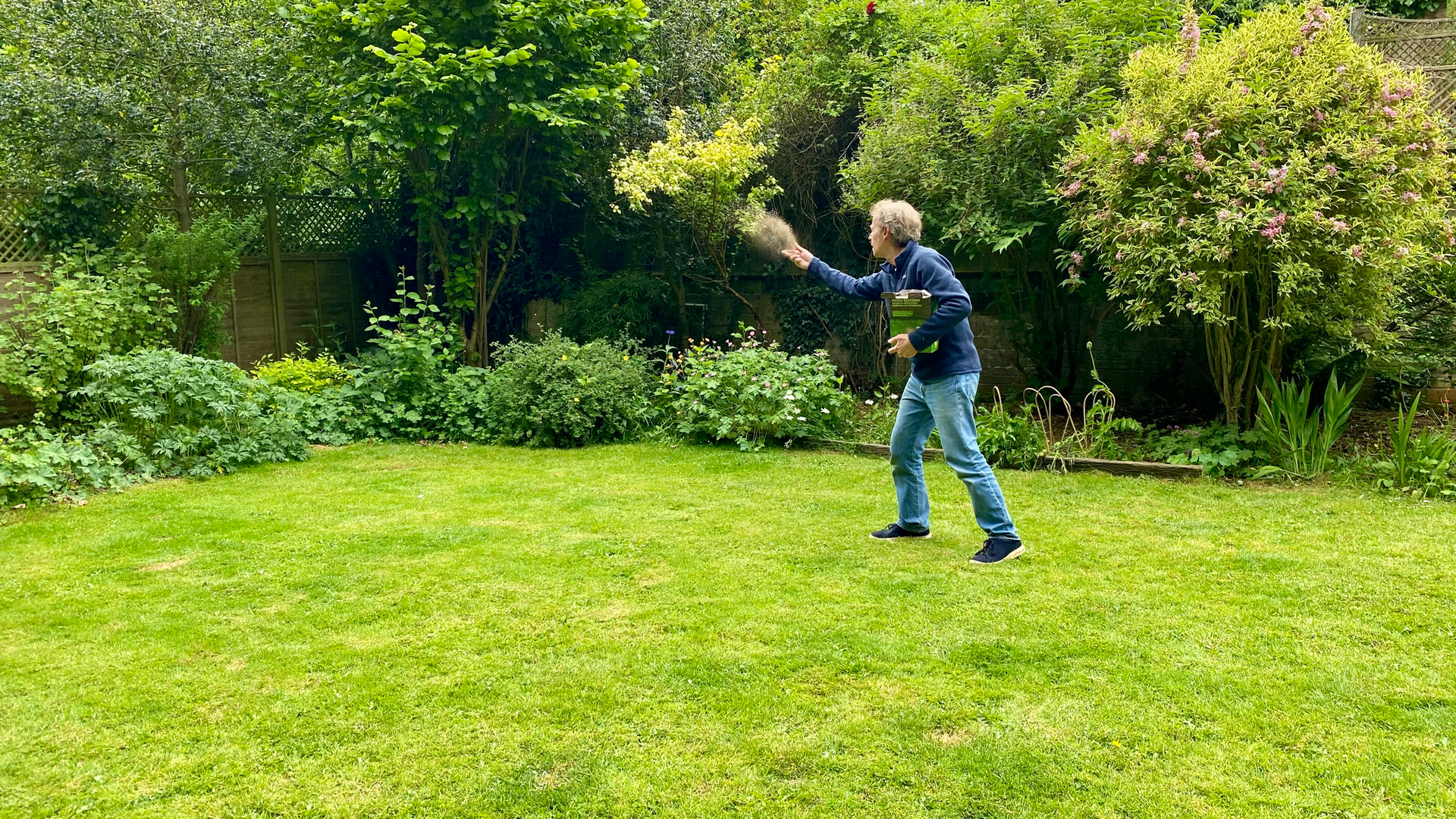
Lawn fertilisation is beneficial for a number or reasons but most notably nutrient enrichment, improved root development, increased growth, resistance to weeds and, above all, enhanced colour and aesthetics.
Fertilising is most effective when performed during active growth periods like spring or early summer and it’s always best to mow the lawn first so the tiny balls of fertiliser can reach the soil more easily. If you want to be doubly sure of the condition of your soil, perhaps consider purchasing a soil testing kit and checking for its pH and nutrient levels. But if you don’t want to go down that pedantic route, simply choose a suitable product off the shelves – B&Q and Homebase stock a decent range – and carefully read the instructions before application. This is important because it’s very easy to damage or even ‘burn’ a lawn by applying too much fertiliser. I would suggest purchasing a bona fide lawn spreader or, if using your hand, be very sparing with distribution and stick to a working pattern on the lawn so you don’t fertilise the same section twice.
After application, water your lawn thoroughly to help the fertiliser penetrate the soil and activate its ingredients. Believe me, once you’ve added a light dusting of fertiliser, your lawn will quite literally pop with a deep green hue that is extremely pleasing to the eye. It will also be much healthier for it.
5. Weeding
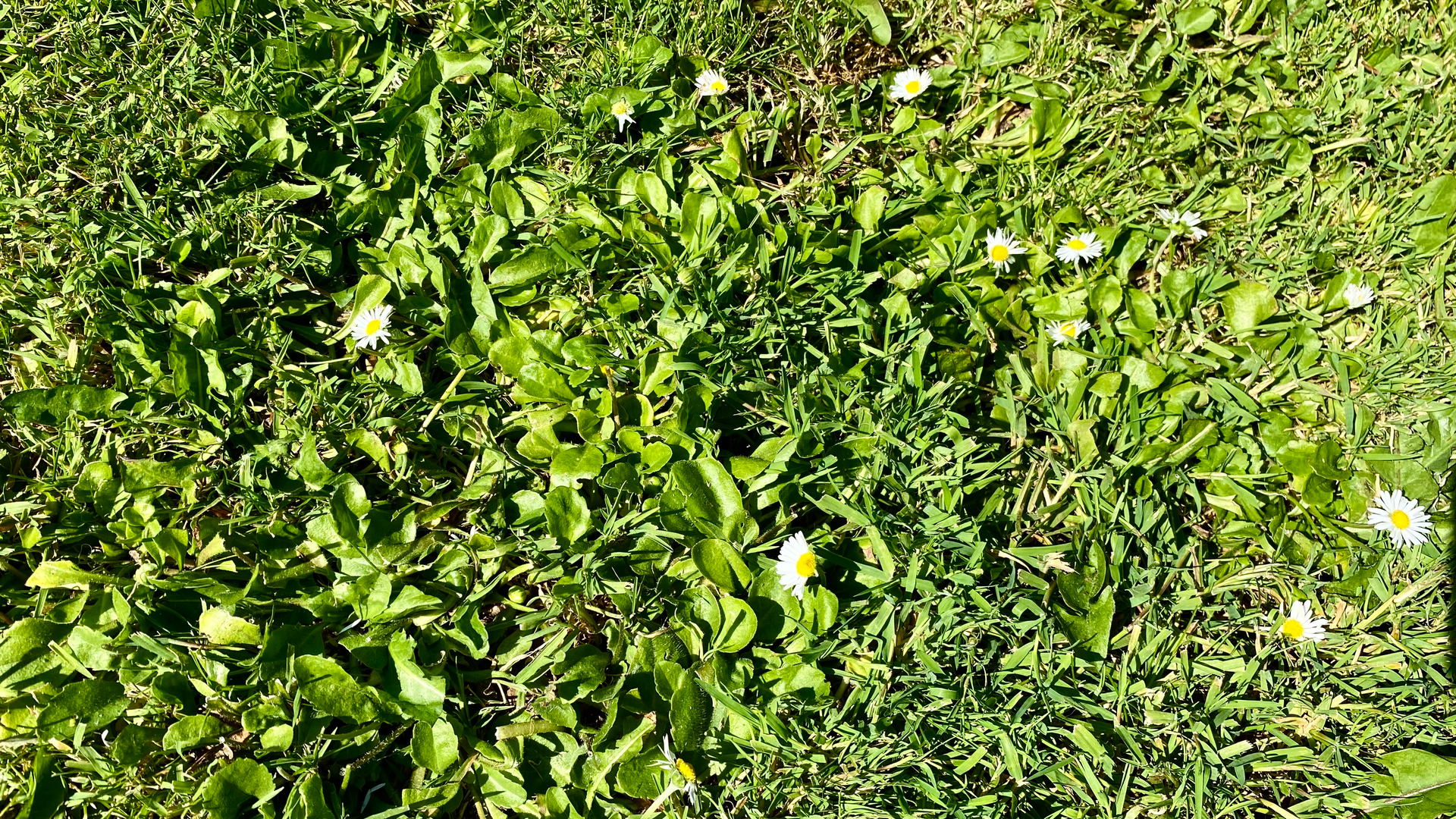
Pulling up the daisies?
Weeds are the avid lawn-smith’s worst enemy even though they provide a source of food and pollen for insects. You could spend ages removing weeds by pulling them up with a pointed trowel or using a lawn weed killer. Or you could simply mow over them to keep growth at bay.
To be honest, weed removal isn’t essential unless it gets really out of hand, and even then it’s still a choice between whether the individual can be bothered with spending ages trying to win the war or just regularly mowing the lawn so that the weed’s aren’t as visible. After all, weeds are usually the exact same hue as grass so they’re not that noticeable from a distance.
I personally can’t see much evidence of weeds on my lawn if viewed from the comfort of the patio and I’m happy with that – from a relative distance it looks okay. However, when I venture on to the lawn and look more closely, I do notice loads of weeds, from dandelion to daisies, but it still doesn’t really bother me and I’m happy to just let them be until I get the mower out again.
If you really want to start tackling lawn weeds on a large scale, your best course of action is a lawn weed killer. However, not all weed killers destroy every weed so unless you know your daisies from your dandelions, you may end up causing more harm than good. The Royal Horticultural Society provides some sage wisdom in this regard with its handy guide to lawn weeds. Read it first before jumping in at the deep end.
Similarly, if you haven’t a clue what weeds you have littering the lawn – or indeed in the borders – I highly recommend the PlantNet app (iOS and Android) which uses the phone’s camera to help identify thousands of different plants, flowers, trees and shrubs. It’s not always 100% accurate but most of the time it gives you the most likely answer.
6. Dogs
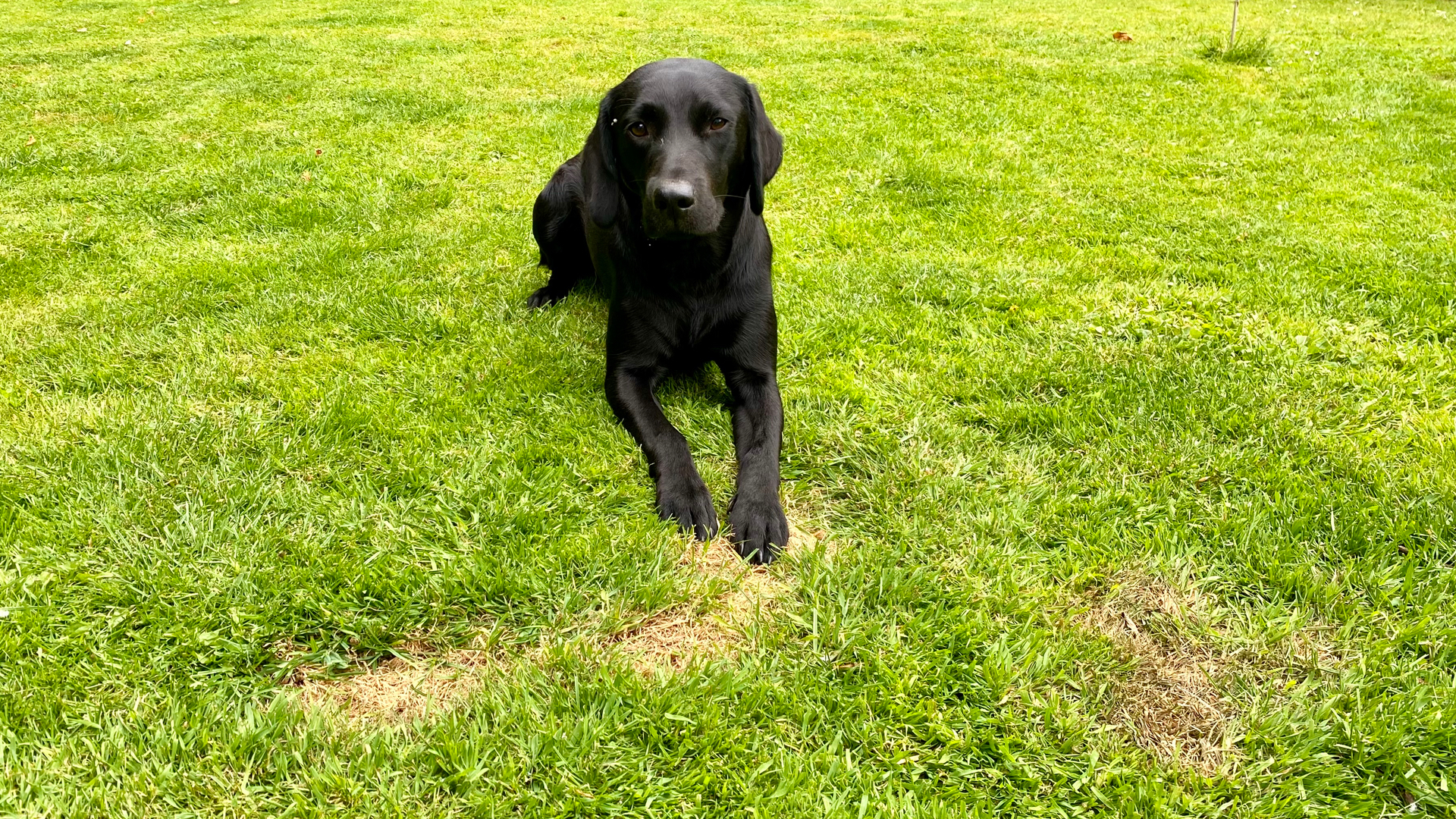
Ah, man’s best friend, the most wholesome of Earth's species… and a garden destroyer. If the dog hasn’t dug up the garden borders or created a dirty great hole in the lawn, it’s left its mark in other ways. Dog faeces doesn’t pose much of a threat but urine most definitely does. And the worst culprits are females because they empty their bladders in one spot unlike males which normally relieve themselves in smaller amounts against trees. Strangely enough, there’s rarely much evidence of dog patches in winter or early spring but as soon as the summer sun hits the lawn, it appears to react with the high concentration of nitrogen and chemicals in the urine and it ‘burns’ the grass so you end up with brown patches all over the place.
I’ve done a lot of research on this and there is no failsafe answer to stopping grass from being ruined by pet urine, short of training the dog to relieve itself in some hidden part of the garden. Some owners swear by Dog Rocks – a mineral stone that’s placed in the dog’s water bowl – but I haven’t had any luck with them. Other owners have had some success by sprinkling their patchy lawn with dog-urine neutraliser seed. Me? I just buy a roll of fresh turf from a local supplier and spend the rest of the afternoon on my knees with a Hori Hori knife replacing patch after patch. I then repeat the process a month later, ad infinitum.
Derek (aka Delbert, Delvis, Delphinium, Delboy etc) specialises in home and outdoor wares, from coffee machines, white appliances and vacs to drones, garden gear and BBQs. He has been writing for more years than anyone can remember, starting at the legendary Time Out magazine – the original, London version – on a typewriter! He now writes for T3 between playing drums with his bandmates in Red Box (redboxmusic).
-
 3 overrated shoulder exercises, according to a fitness expert (and what to do instead)
3 overrated shoulder exercises, according to a fitness expert (and what to do instead)Sculpt 3D shoulders whilst minimising injury with these three alternative exercises
By Bryony Firth-Bernard Published
-
 Polar’s new subscription feature lands in the shadow of Garmin’s Connect+ rollout
Polar’s new subscription feature lands in the shadow of Garmin’s Connect+ rolloutPR genius or timing disaster? Polar’s new Fitness Programme adds adaptive training to its ecosystem
By Matt Kollat Published
-
 Wired vs. boundary-free robot lawn mowers: which one is right for you?
Wired vs. boundary-free robot lawn mowers: which one is right for you?It's a tricky decision after all!
By Lizzie Wilmot Published
-
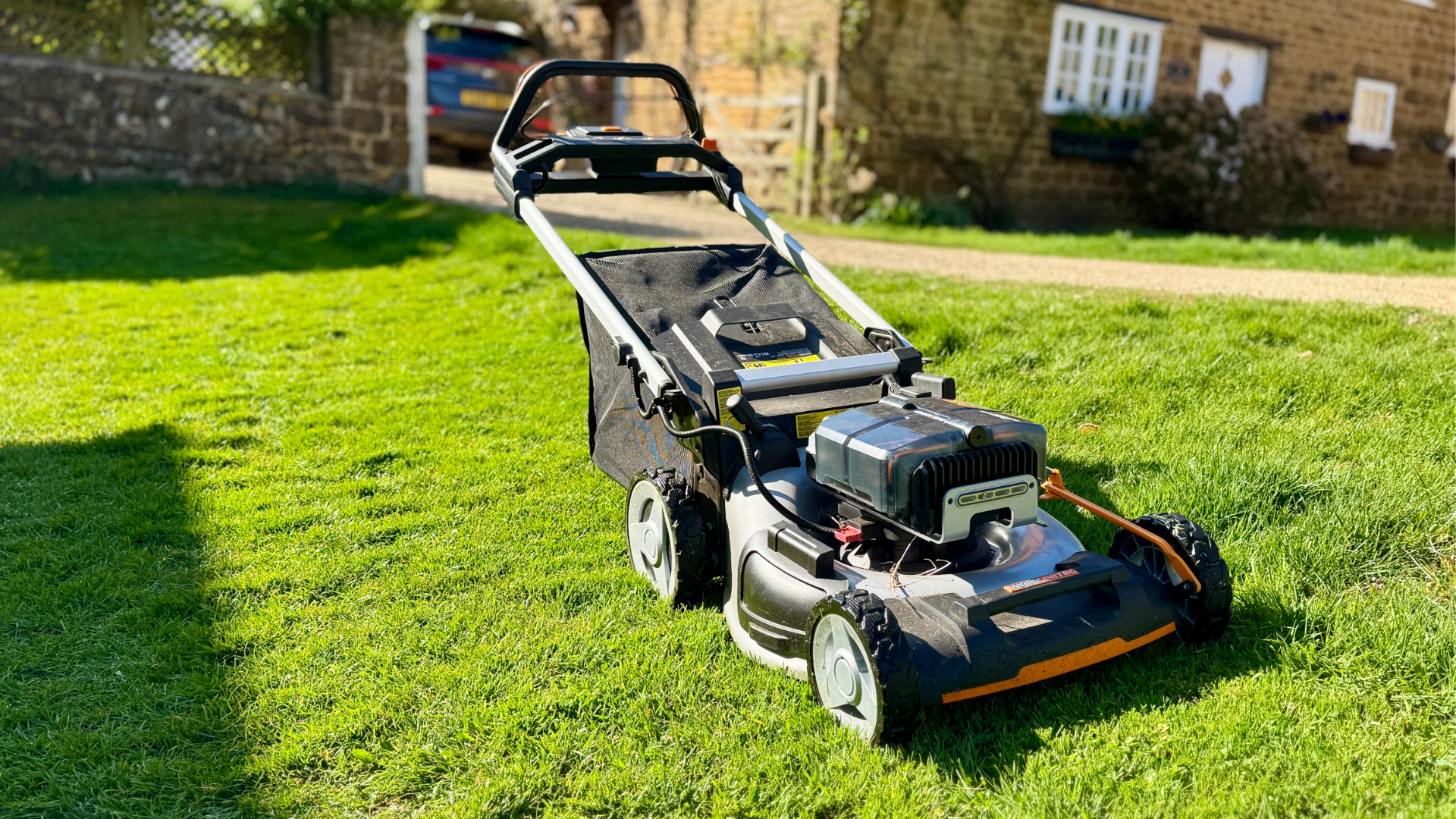 Worx Nitro WG761E 80V lawn mower review: cordless power meets petrol performance
Worx Nitro WG761E 80V lawn mower review: cordless power meets petrol performanceBig power, no fumes – the Worx Nitro might just be the ultimate cordless mower
By Derek Adams Published
-
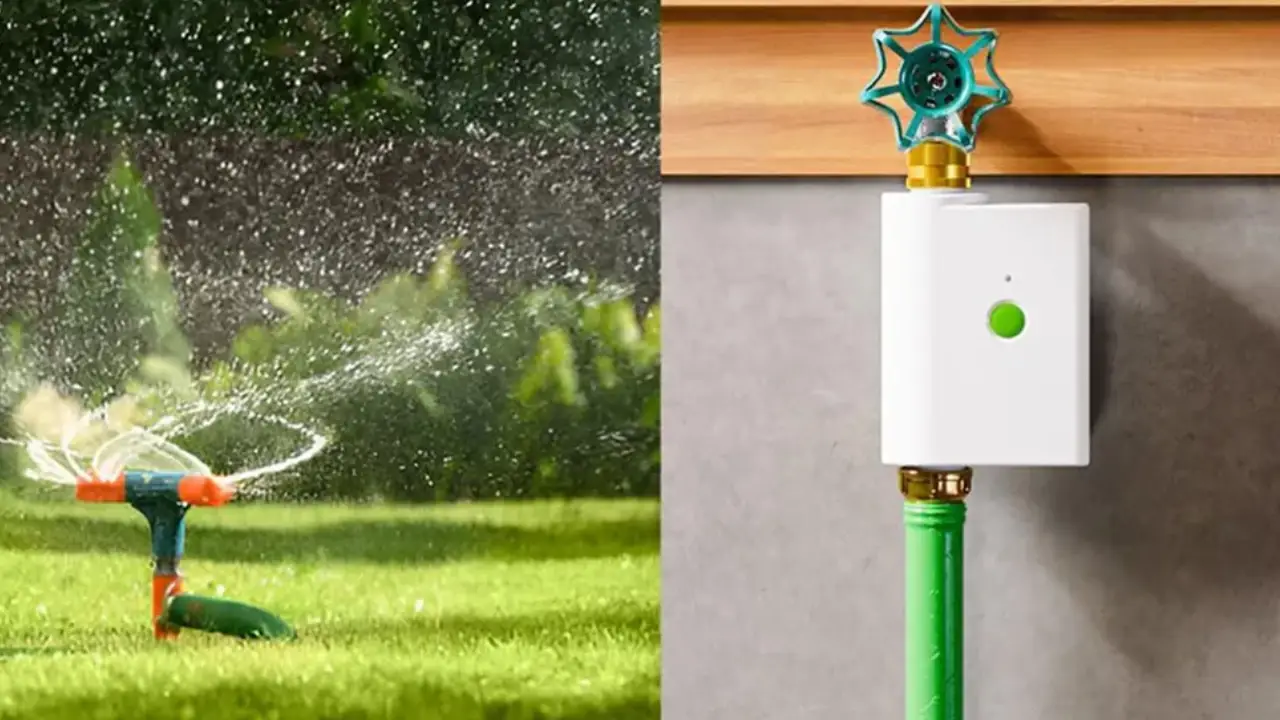 This Meross smart sprinkler makes it easier to water your garden – and it’s surprisingly affordable
This Meross smart sprinkler makes it easier to water your garden – and it’s surprisingly affordableThe Meross Smart Sprinkler Timer waters your garden for you
By Bethan Girdler-Maslen Published
-
 New Matter leak reveals exciting smart garden tools heading our way – a lot sooner than expected
New Matter leak reveals exciting smart garden tools heading our way – a lot sooner than expectedThat was pretty unexpected!
By Lizzie Wilmot Published
-
 This is the world's first multi-purpose garden robot – it even has a leaf sweeper attachment
This is the world's first multi-purpose garden robot – it even has a leaf sweeper attachmentYou won't even have to lift a finger
By Lizzie Wilmot Published
-
 Govee's new smart string lights are nearly here – and the design is my favourite so far
Govee's new smart string lights are nearly here – and the design is my favourite so farThey've appeared on the CSA website and Amazon
By Lizzie Wilmot Published
-
 Philips Hue Appear Outdoor Wall Light review: one of my favourite smart lights so far
Philips Hue Appear Outdoor Wall Light review: one of my favourite smart lights so farSleek, minimalistic, and beautifully bright
By Lizzie Wilmot Last updated
-
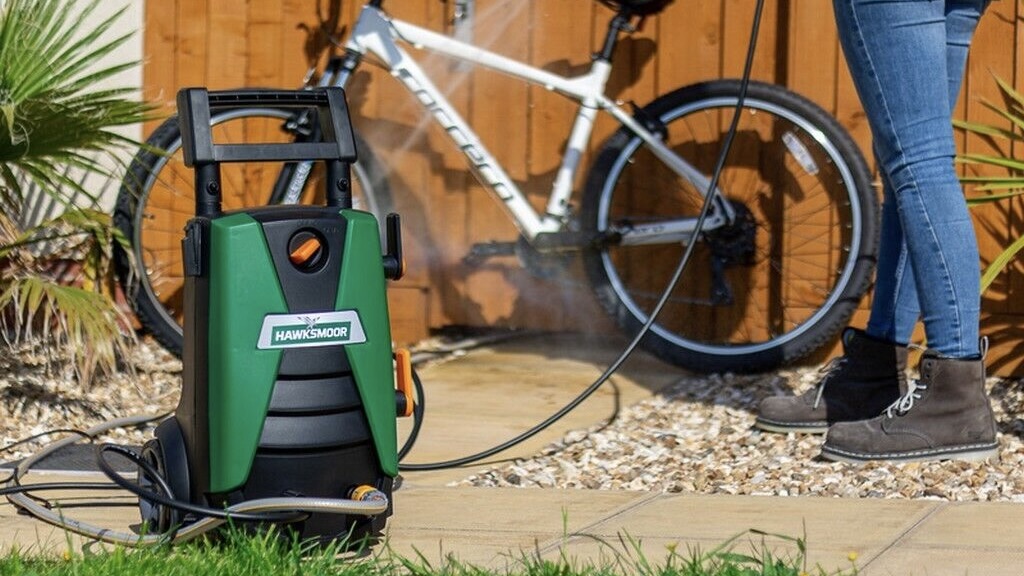 This top-rated pressure washer rivals Kärcher – without the hefty price tag
This top-rated pressure washer rivals Kärcher – without the hefty price tagIt's a crowd favourite
By Lizzie Wilmot Published